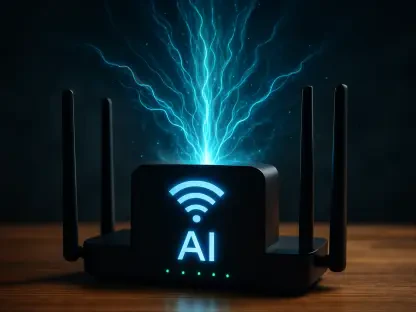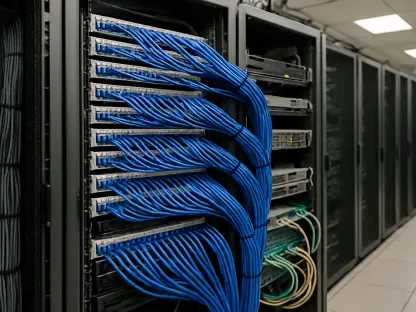In the rapidly evolving field of telecommunications, Matilda Bailey stands out as a thought leader, particularly in cellular, wireless, and next-gen solutions. Today, she provides her insights into the intriguing partnership between AT&T and Helium, which is poised to revolutionize Wi-Fi accessibility across the U.S. With a strong focus on decentralized networks, Matilda takes us through the intricacies of this collaboration, exploring both the technologies involved and the broader implications for consumers and the industry at large.
Can you explain the partnership between AT&T and Helium?
The partnership between AT&T and Helium is an exciting development in telecommunications. It involves integrating Helium’s decentralized, community-powered network of Wi-Fi hotspots to expand AT&T’s Wi-Fi coverage. Helium’s network operates through small-scale wireless devices, known as Hotspots, that individuals and businesses deploy. This arrangement expands service coverage, giving AT&T subscribers enhanced connectivity options. The collaboration reflects a strategic move by AT&T to tap into innovative technologies that broaden their network reach and improve reliability for users.
What motivated AT&T to partner with Helium for Wi-Fi expansion?
AT&T was likely motivated by the potential for expanding its network reach in a cost-effective manner. Helium’s decentralized model allows AT&T to leverage an existing, rapidly growing infrastructure without needing significant upfront investment. This partnership lets AT&T enhance its service reliability by utilizing Helium’s vast network of volunteer-run hotspots, which are already well-distributed and expanding. It offers a practical solution for improving user experience, particularly in areas where traditional infrastructure might be lacking or expensive to develop.
How does Helium’s decentralized network function?
Helium’s network functions on a decentralized model using Hotspots, small wireless devices that individuals or businesses can deploy. These Hotspots provide network coverage and are incentivized by earning Helium’s native token, HNT. Users are rewarded based on the data usage and coverage they contribute, creating a self-sustaining, community-driven network. This setup has allowed Helium to build a robust infrastructure that not only serves their immediate connectivity goals but also creates a scalable platform for future growth.
What role do Hotspots play in Helium’s network?
Hotspots are crucial to Helium’s network as they are the building blocks of its decentralized infrastructure. Each Hotspot extends the network by providing local wireless coverage. They are managed by individual users who are rewarded with tokens for their participation, effectively incentivizing the expansion and sustainability of the network. This community-based model drives a more organic and rapid growth of the infrastructure, as participants have a direct financial interest in the network’s success and coverage.
How does Passpoint technology facilitate connectivity for AT&T subscribers?
Passpoint technology is vital for ensuring seamless connectivity for AT&T subscribers. It allows devices to automatically and securely connect to Wi-Fi networks, such as those provided by Helium’s Hotspots, without manual intervention from the user. By simplifying the authentication process, Passpoint facilitates a smooth transition between cellular networks and decentralized Wi-Fi, enhancing the overall user experience. Subscribers can enjoy consistent connectivity as they move through different network environments, minimizing disconnection or manual logins.
Can you discuss the commercial agreement between AT&T and Nova Labs?
The commercial agreement between AT&T and Nova Labs, which develops the Helium network, enables this integration to operate smoothly. Rather than directly compensating Hotspot operators, AT&T relies on Helium’s existing reward system, where operators earn HNT tokens based on their contribution to network coverage and data traffic. This agreement aligns incentives naturally and ensures that the network continues to expand and improve, rewarding those who support the infrastructure needed for AT&T’s enhanced services.
Helium’s network supports over 800,000 daily users. What factors contribute to this adoption rate?
The strong adoption rate of over 800,000 daily users can be attributed to Helium’s innovative model that combines decentralized technology with economic incentives. The community-driven nature of the network encourages individuals to participate, expand, and optimize coverage. Additionally, the user base grows as more telecom operators, like Telefónica’s Movistar in Mexico, integrate Helium technology into their services. The operational benefits, such as increased coverage and cost efficiency, make Helium an attractive option for both network providers and end-users.
What is the significance of Helium Mobile launching the Zero Plan in February 2024?
The launch of the Zero Plan by Helium Mobile represents a landmark moment for decentralized networks entering mainstream telecommunications. It offers free phone plans with unlimited text, talk, and data, challenging traditional pricing models. This initiative demonstrates that decentralized technologies can not only compete with but also complement and enhance existing telecom services, making them more affordable and accessible. It’s a bold statement of intent from Helium, signaling their commitment to integrating innovative, user-focused solutions into everyday connectivity.
What was the outcome of the SEC’s investigation into Helium’s token offerings?
The SEC’s investigation concluded positively for Helium, ruling that HNT, MOBILE, and IoT tokens are not unregistered securities. This regulatory clearance is significant because it removes a major legal obstacle, granting Helium the freedom to continue with its token-related operations without the fear of litigation. This outcome gives Helium more confidence to pursue growth strategies and expand its ecosystem, potentially attracting more investors and partners who were previously cautious due to regulatory uncertainties.
Helium transitioned to Solana in 2022. What advantages did this migration provide?
Migrating to Solana in 2022 gave Helium significant scalability and performance enhancements needed to support its network’s future growth. Solana’s blockchain provides faster transaction speeds and higher throughput, which are crucial for managing the large volume of micro-transactions in Helium’s ecosystem. This shift ensures that Helium’s network remains efficient and responsive, bolstering its infrastructure’s capability to handle increased demand as its user base and hotspot deployment grow further.
How has Helium’s fundraising influenced its development and expansion?
Helium’s fundraising efforts have been instrumental in its development and expansion. The $111 million token sale and $200 million Series D round provided the financial resources needed to scale operations, enhance its technology, and push boundaries of what’s possible in decentralized networking. Such substantial capital supports ongoing R&D, network improvement, and strategic partnerships, positioning Helium as a key player in revolutionizing telecommunications through decentralized infrastructure.
How does the integration of Helium’s infrastructure signal a new phase in wireless convergence?
The integration of Helium’s infrastructure marks a pivotal shift towards the convergence of decentralized and traditional wireless networks. By blending community-driven technology with established telecom services, we can offer users more reliable, extensive, and cost-effective connectivity solutions. This model enhances network resilience through diversification and paves the way for future advancements in wireless technology, potentially reshaping how we access mobile networks on a fundamental level.
Do you have any advice for our readers?
For readers interested in the evolving landscape of telecommunications, I recommend staying informed about developments in decentralized networks and their potential impacts. These technologies hold the promise of more democratic and resilient connectivity solutions, offering exciting opportunities for innovation, investment, and improved consumer experiences in the near future.









